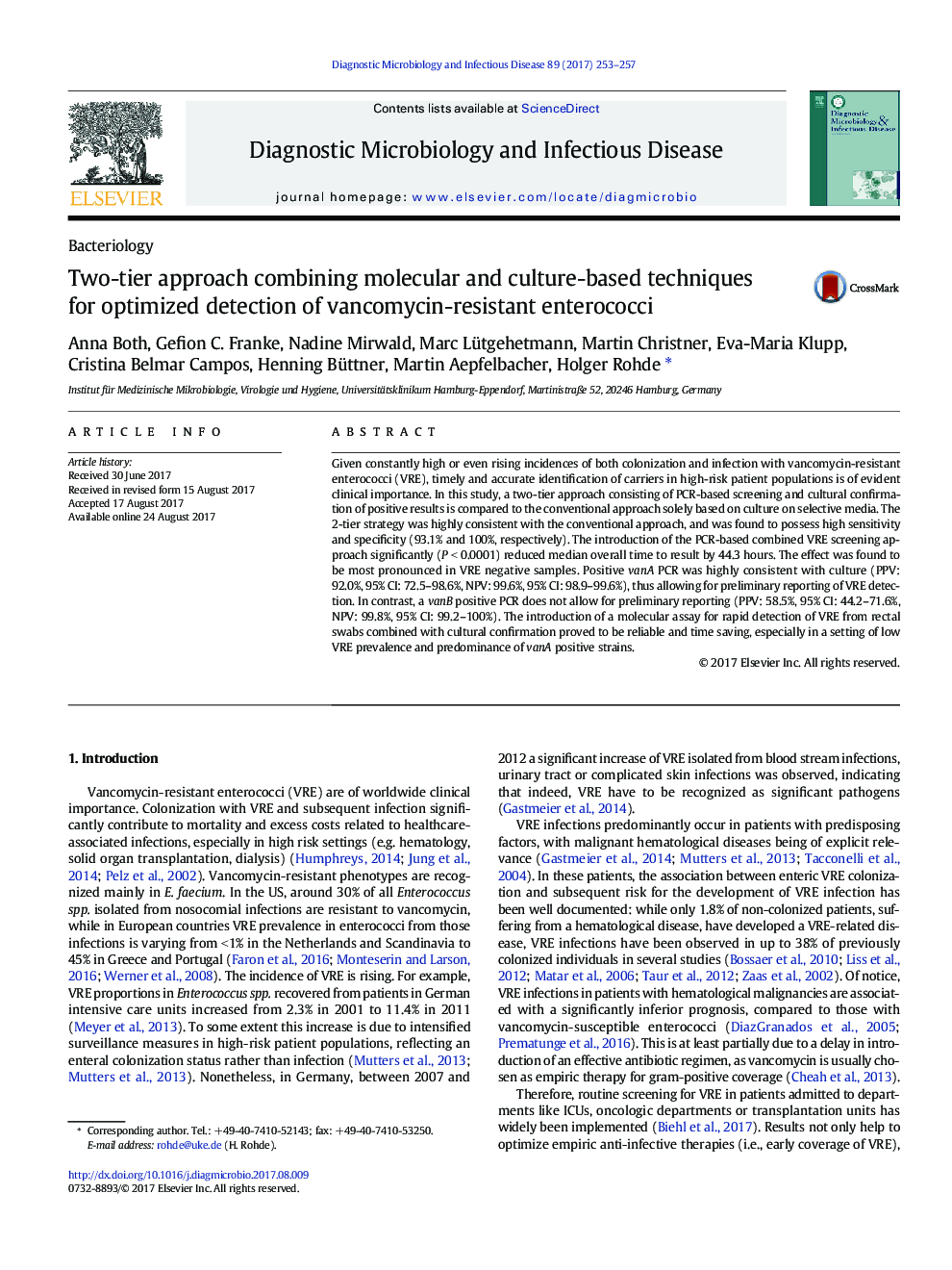| Article ID | Journal | Published Year | Pages | File Type |
|---|---|---|---|---|
| 8737373 | Diagnostic Microbiology and Infectious Disease | 2017 | 5 Pages |
Abstract
Given constantly high or even rising incidences of both colonization and infection with vancomycin-resistant enterococci (VRE), timely and accurate identification of carriers in high-risk patient populations is of evident clinical importance. In this study, a two-tier approach consisting of PCR-based screening and cultural confirmation of positive results is compared to the conventional approach solely based on culture on selective media. The 2-tier strategy was highly consistent with the conventional approach, and was found to possess high sensitivity and specificity (93.1% and 100%, respectively). The introduction of the PCR-based combined VRE screening approach significantly (PÂ <Â 0.0001) reduced median overall time to result by 44.3Â hours. The effect was found to be most pronounced in VRE negative samples. Positive vanA PCR was highly consistent with culture (PPV: 92.0%, 95% CI: 72.5-98.6%, NPV: 99.6%, 95% CI: 98.9-99.6%), thus allowing for preliminary reporting of VRE detection. In contrast, a vanB positive PCR does not allow for preliminary reporting (PPV: 58.5%, 95% CI: 44.2-71.6%, NPV: 99.8%, 95% CI: 99.2-100%). The introduction of a molecular assay for rapid detection of VRE from rectal swabs combined with cultural confirmation proved to be reliable and time saving, especially in a setting of low VRE prevalence and predominance of vanA positive strains.
Related Topics
Life Sciences
Immunology and Microbiology
Applied Microbiology and Biotechnology
Authors
Anna Both, Gefion C. Franke, Nadine Mirwald, Marc Lütgehetmann, Martin Christner, Eva-Maria Klupp, Cristina Belmar Campos, Henning Büttner, Martin Aepfelbacher, Holger Rohde,
